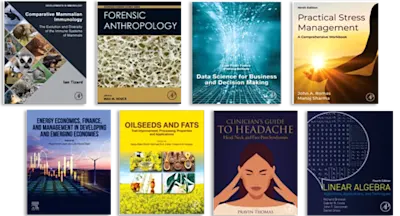
Workbook to Accompany Physics for Students of Science and Engineering
- 1st Edition - December 2, 2012
- Imprint: Academic Press
- Author: J Tanner
- Language: English
- Paperback ISBN:9 7 8 - 0 - 1 2 - 6 6 3 3 8 2 - 5
- eBook ISBN:9 7 8 - 0 - 3 2 3 - 1 5 8 4 7 - 3
Workbook to Accompany: Physics for Students of Science and Engineering is 25-chapter workbook designed to accompany the Physics for Students of Science and Engineering textbook.… Read more

Purchase options

Institutional subscription on ScienceDirect
Request a sales quoteWorkbook to Accompany: Physics for Students of Science and Engineering is 25-chapter workbook designed to accompany the Physics for Students of Science and Engineering textbook. This workbook is a collection of question and problems that are representative of the topics covered in the textbook. The format of this workbook is based on individual chapters of the textbook. The questions and problems associated with each chapter begin with a one-page review of the definitions, units, and simple relationships appropriate to that chapter. Each review, in the form of questions and one-step problems, is followed by more comprehensive problems, formatted one to a page. Each problem is stated at the top of a page, and the student is provided space to execute each element of the problem-solving procedure. A detailed solution to each problem is presented in the same form, such as in the format of the problem solving procedure, on the reverse side of the page. The solution page often includes comments and suggestions appropriate to the specific type of problem being considered. The opening chapters include discussions on particle kinematics and dynamics; applications of Newton’s laws; and work, power, and energy. The subsequent chapters explore the concepts of momentum, collisions, rotational motion, oscillations, mechanics of fluids, heat, and thermodynamics. Other chapters examine the principles of electric charge, electric fields, electric potential, capacitance, current, resistance, direct-current circuits, magnetic fields, and electromagnetic oscillations. The remaining chapters deal with wave motion, sound, geometric and physical optics, special relativity, early quantum physics, and wave mechanics. This workbook will be of great benefit to physics teachers and students.
Chapter 1 Introduction Chapter 2 Particle Kinematics Chapter 3 Particle Dynamics Chapter 4 Applications of Newton's Laws Chapter 5 Work, Energy, and Power Chapter 6 Momentum and Collisions Chapter 7 Rotational Motion Chapter 8 Oscillations Chapter 9 Mechanics of Fluids Chapter 10 Heat and ThermodynamicsChapter 11 Electric Charge and Electric Fields Chapter 12 Calculation of Electric FieldsChapter 13 Electric Potential Chapter 14 Capacitance, Current, and Resistance Chapter 15 Direct-Current Circuits Chapter 16 Magnetic Fields I Chapter 17 Magnetic Fields II Chapter 18 Electromagnetic Oscillations Chapter 19 Wave Motion and Sound Chapter 20 Geometric Optics Chapter 21 Physical Optics Chapter 22 Special Relativity Chapter 23 Early Quantum Physics Chapter 24 Topics in Quantum Physics Chapter 25 Introduction to Wave Mechanics
- Edition: 1
- Published: December 2, 2012
- Imprint: Academic Press
- Language: English
- Paperback ISBN: 9780126633825
- eBook ISBN: 9780323158473
Read Workbook to Accompany Physics for Students of Science and Engineering on ScienceDirect